Hardy Junipers For Your Landscape: So Many Sizes, Shapes, And Colors

Junipers love full sun, are drought tolerant and there are dozens (maybe hundreds) of hardy varieties available for you to plant and grow. Here are the varieties we'll be looking at:
- Mother Lode Juniper
- Star Power Juniper
- Savin Juniper
- Wichita Blue Juniper
- Icee Blue Juniper
- Medora Juniper
- Trautman Juniper
- Green Columnar Juniper
- Calgary Carpet Juniper
- Arcadia Juniper
- Taylor Juniper
- Prince of Wales Juniper
I'll encourage you to watch the video tour first to get an overview of these favorite junipers of mine, or feel free to skip ahead to my quick descriptions, comments, and photos. Either way, I'm glad you stopped by. Junipers are great!
Mother Lode Juniper, Juniperus horizontalis' Mother Lode'
Mother Lode is in the creeping or carpet juniper category. Prostrate is also a term used to describe this category of Junipers. It is one of my favorites due to its bright, golden-yellow foliage. I love using various yellow focal points throughout landscapes as they draw the eye quickly to an area. Creeping junipers like Motherlode stand out best when allowing them to drape over walls or intermingle and climb over rocks. A plum-like winter color is also very unique to the Mother Lode.
You'll find that these types of creeping or carpet junipers can move out quickly and cover large areas due to their layering capabilities. Layering is a propagation term where stems can form roots, most commonly when touching soil or mulch.
I have the Mother Lode planted in a mulch and patio area (where layering is not possible). The one growing in mulch is a clear winner regarding size and territory covered due to this layering capability. Mother Lode grows 4-6" high and is hardy to Zone 3.
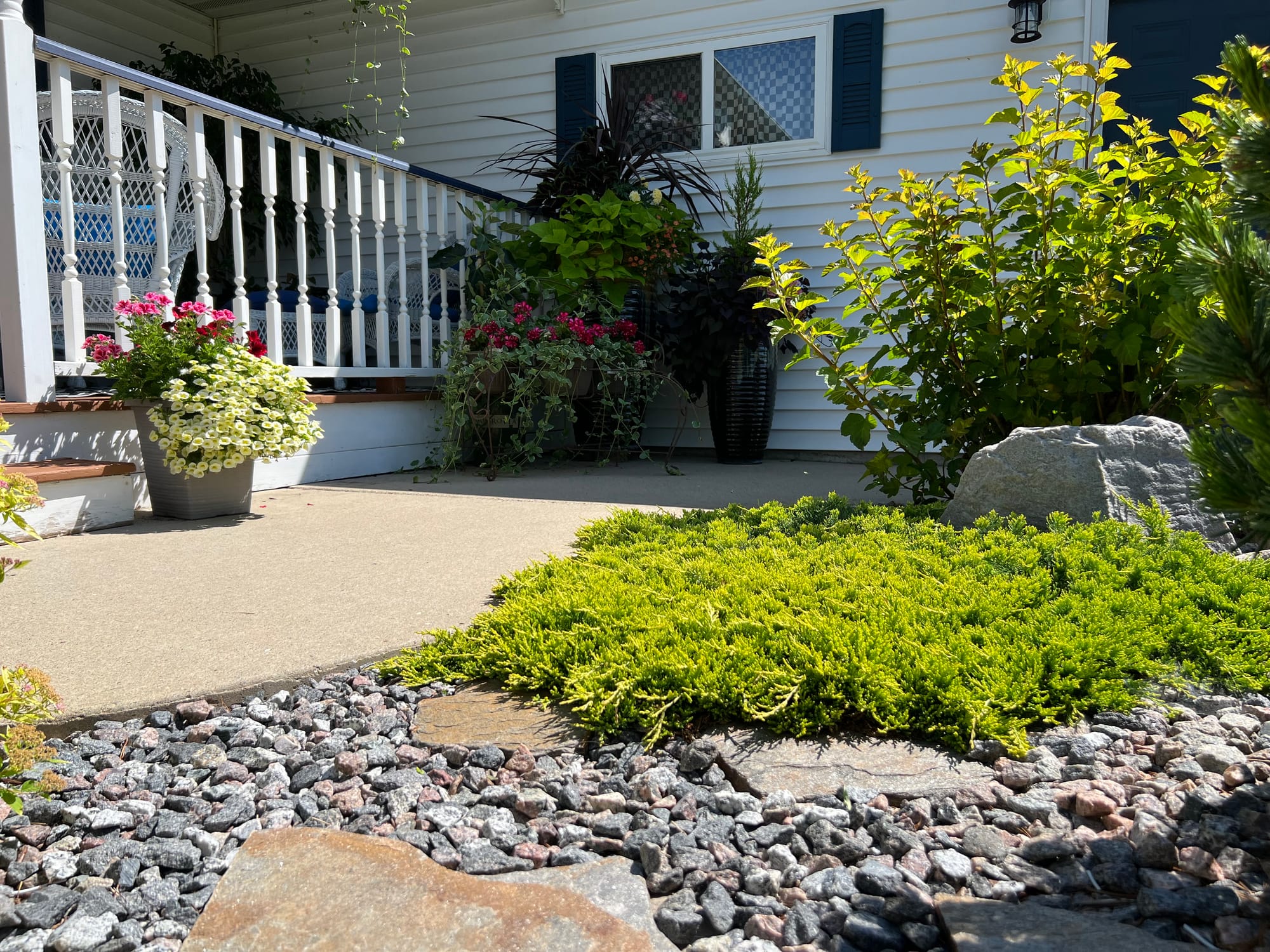
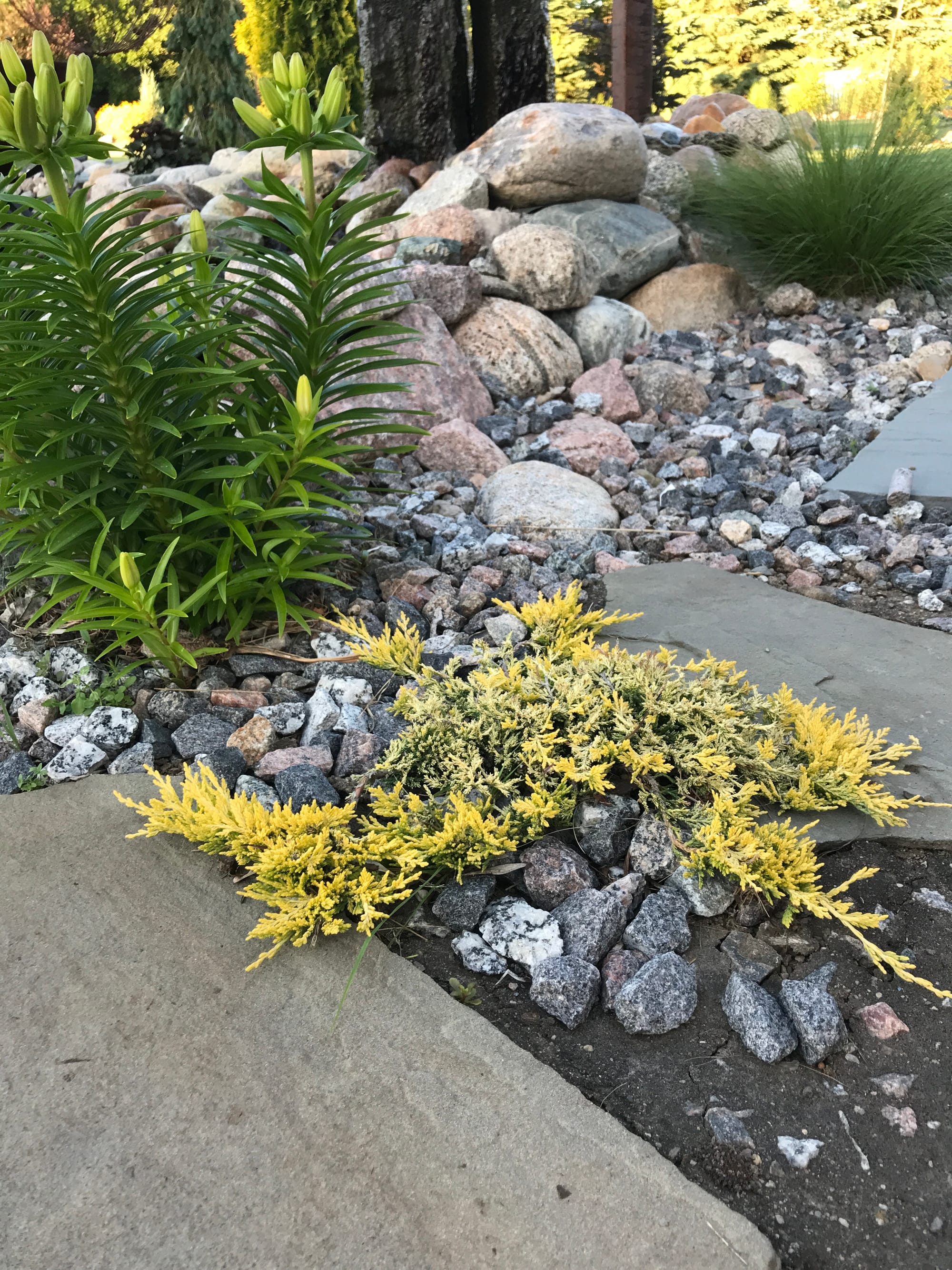
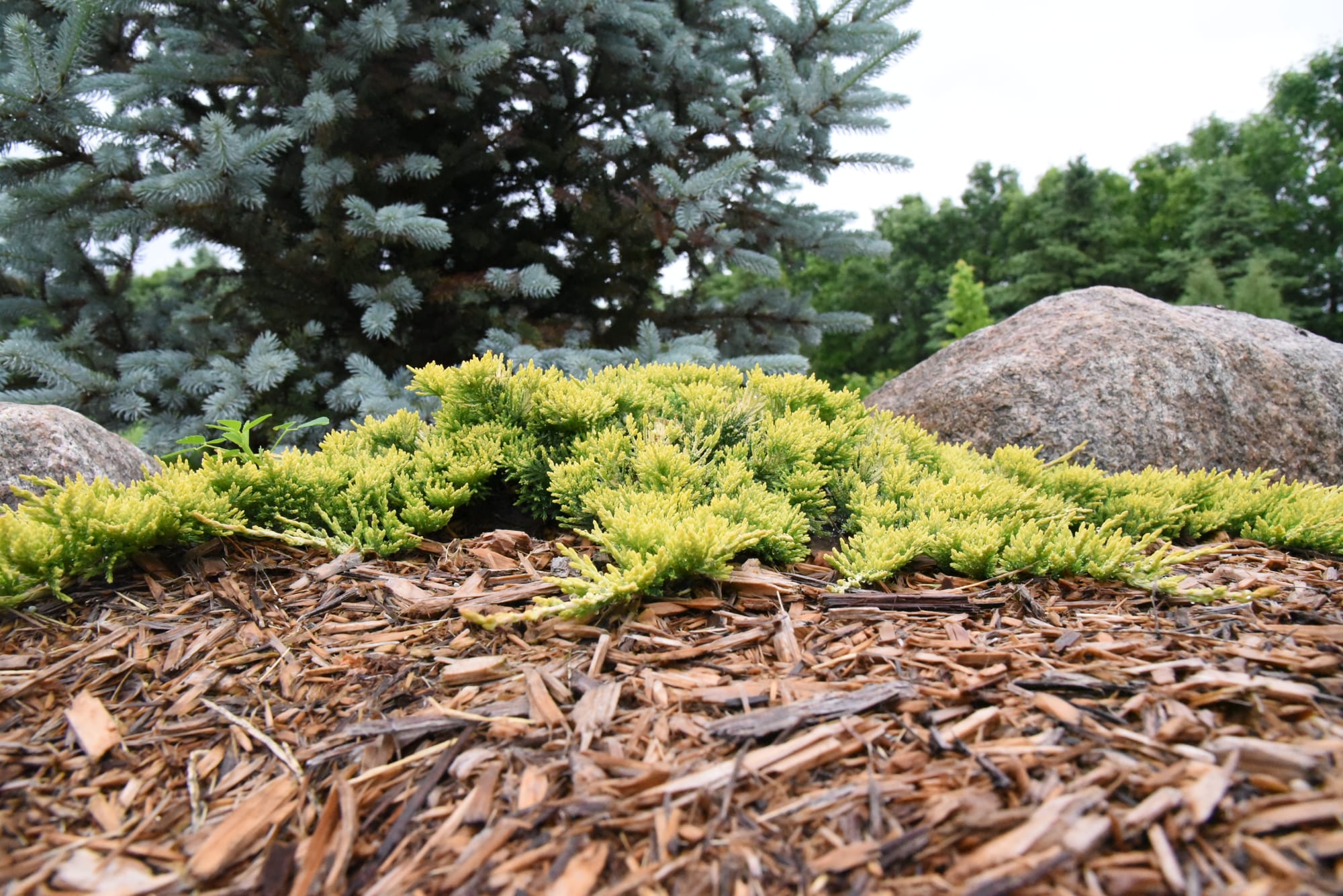
Mother Lode Juniper
Star Power Juniper, Juniperus x Star Power ('J.N. Select Blue')
Star Power is an upright juniper believed to be a hybrid cross between the communis and chinensis species. This makes sense since it has the characteristic sharp, and a bluish-green waxy needles. It has a dense ascending branch habit and grows fast for a juniper at 12-15" per year. I needed a compact upright plant for an arid location in direct sun. Star Power is perfect and thriving in this location. The mature size is 20' H x 10' W, and it is hardy to Zone 3.
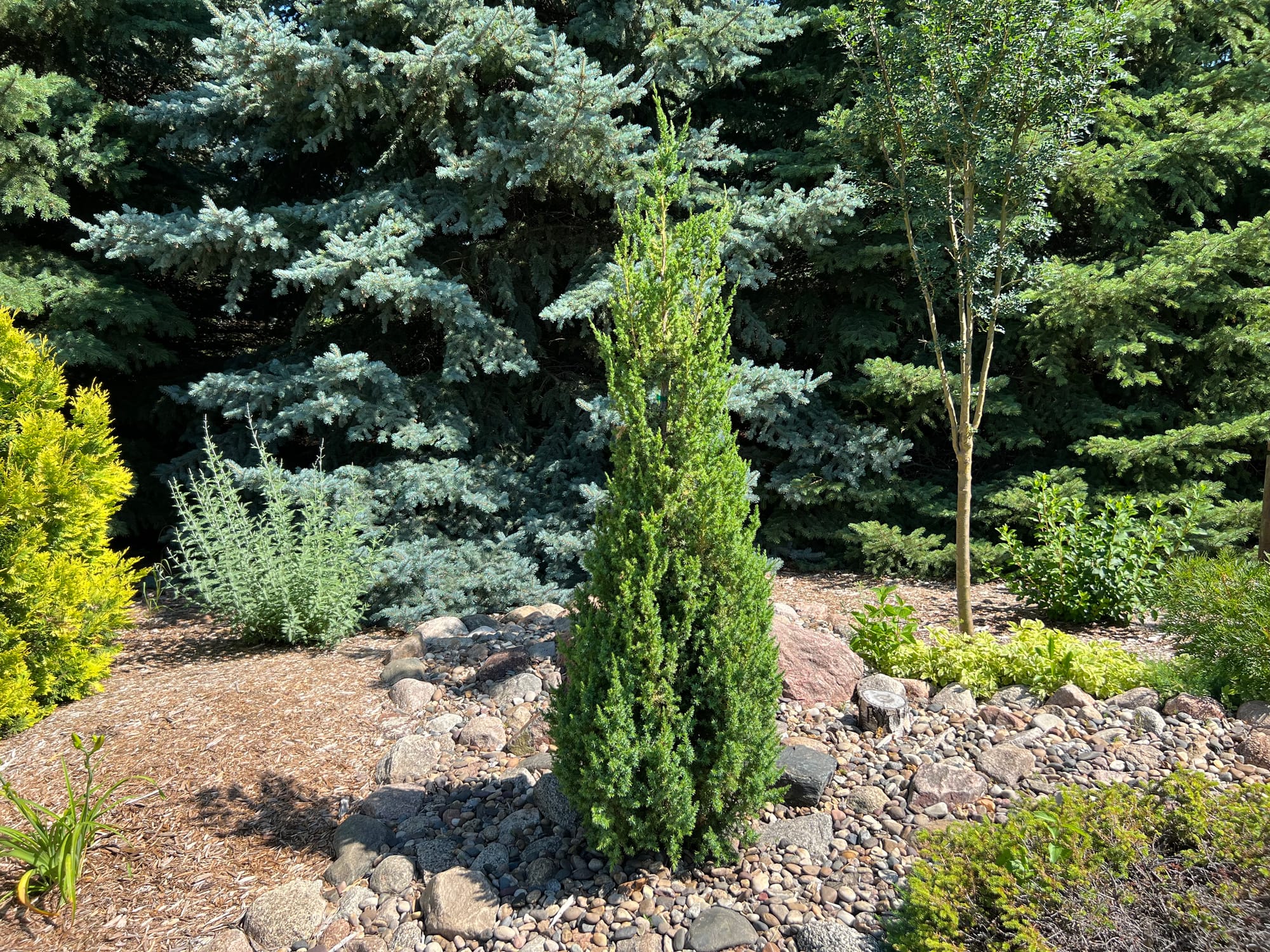
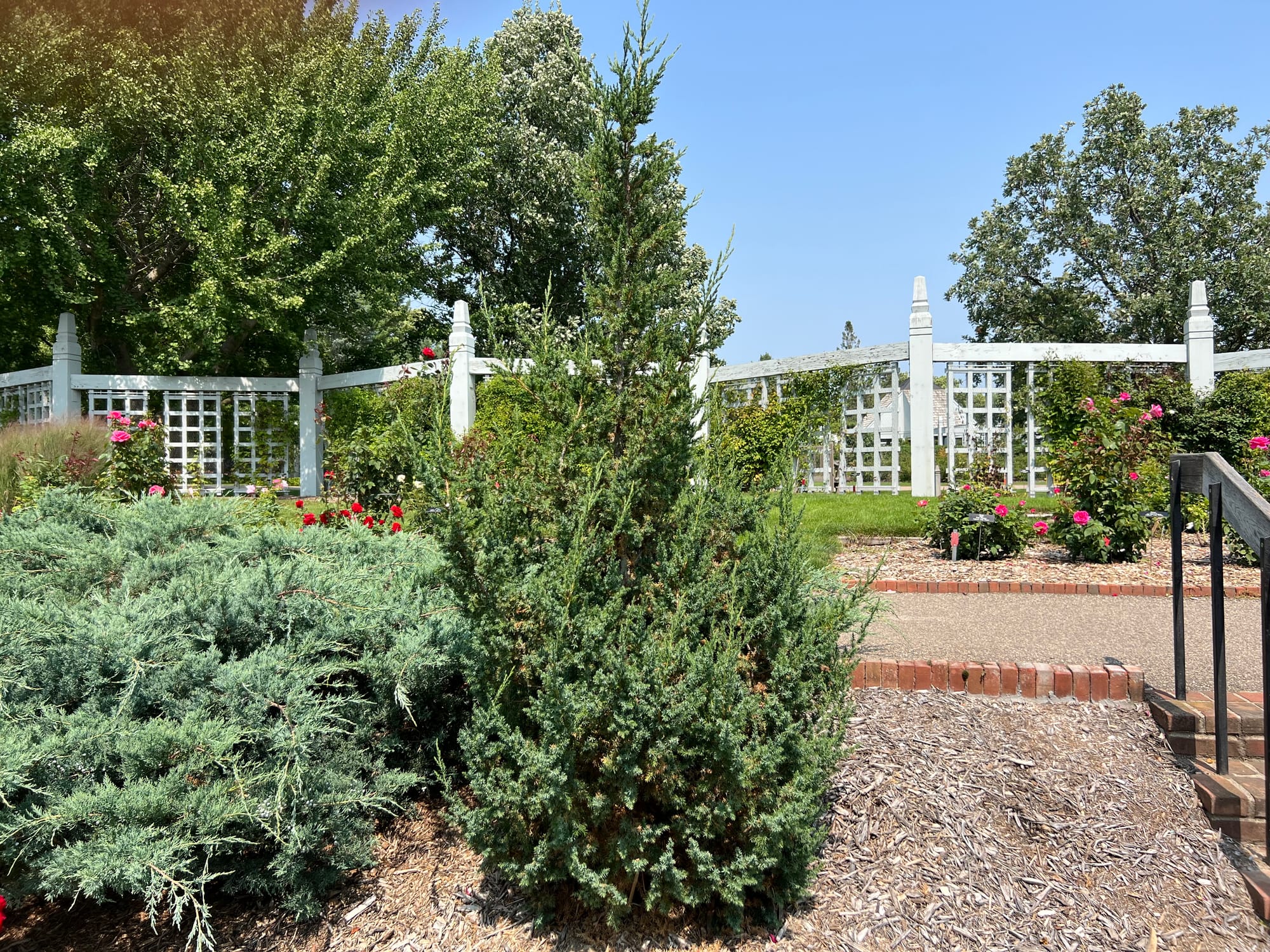
Star Power Juniper
Savin Juniper, Juniperus sabina
Savin is a vase-shaped evergreen with a slight spreading habit. I prefer to keep this in its natural form by pruning out several of the longest leaders each season. Here is a video with a quick tutorial on pruning several different juniper varieties. Unfortunately, many junipers like the Savin are planted in areas too small for their location, and they become victims of the power shears and end up in various balls, squares, and other odd shapes.
Savin has a beautiful emerald green color, survives our harsh winters here in the northern Great Plains, and is deer-resistant and drought-tolerant. It can get 4-6 feet high and easily 10 feet wide, making it a great background evergreen for contrasting against other plant colors. Due to how large it can get, I think it has fallen out of favor in the nursery trade and with landscapers. The yards are smaller now, and people want less maintenance.
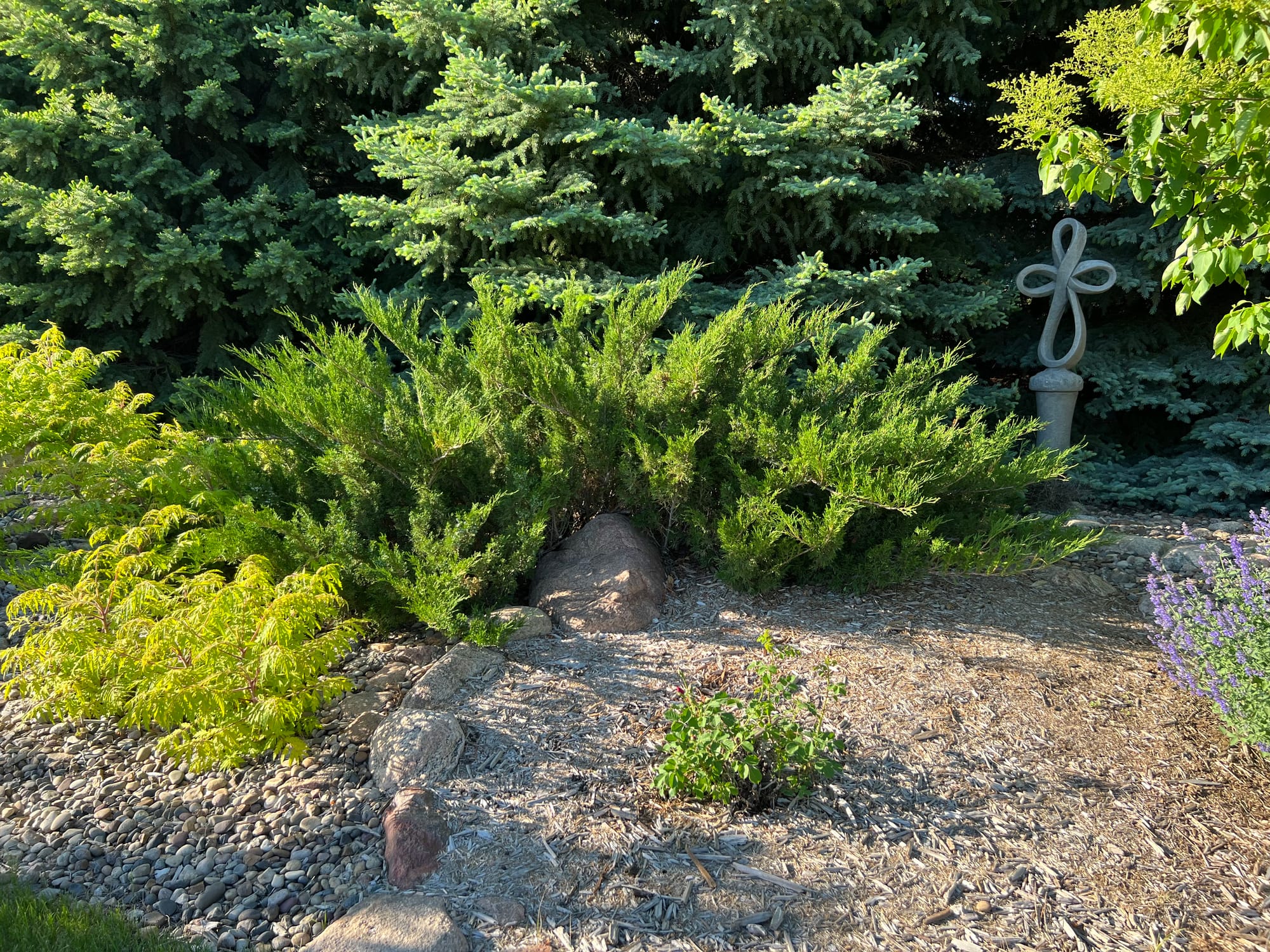
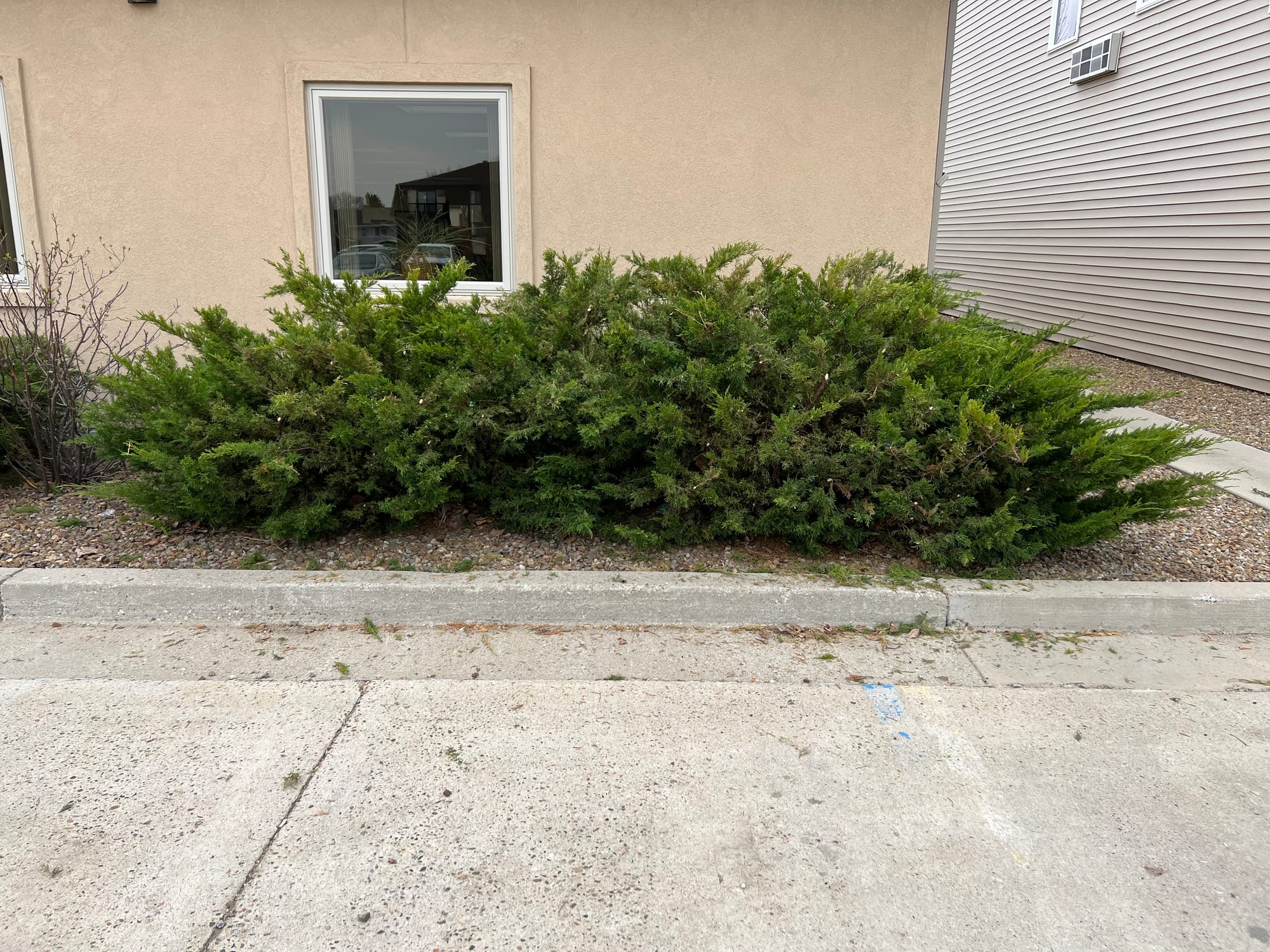
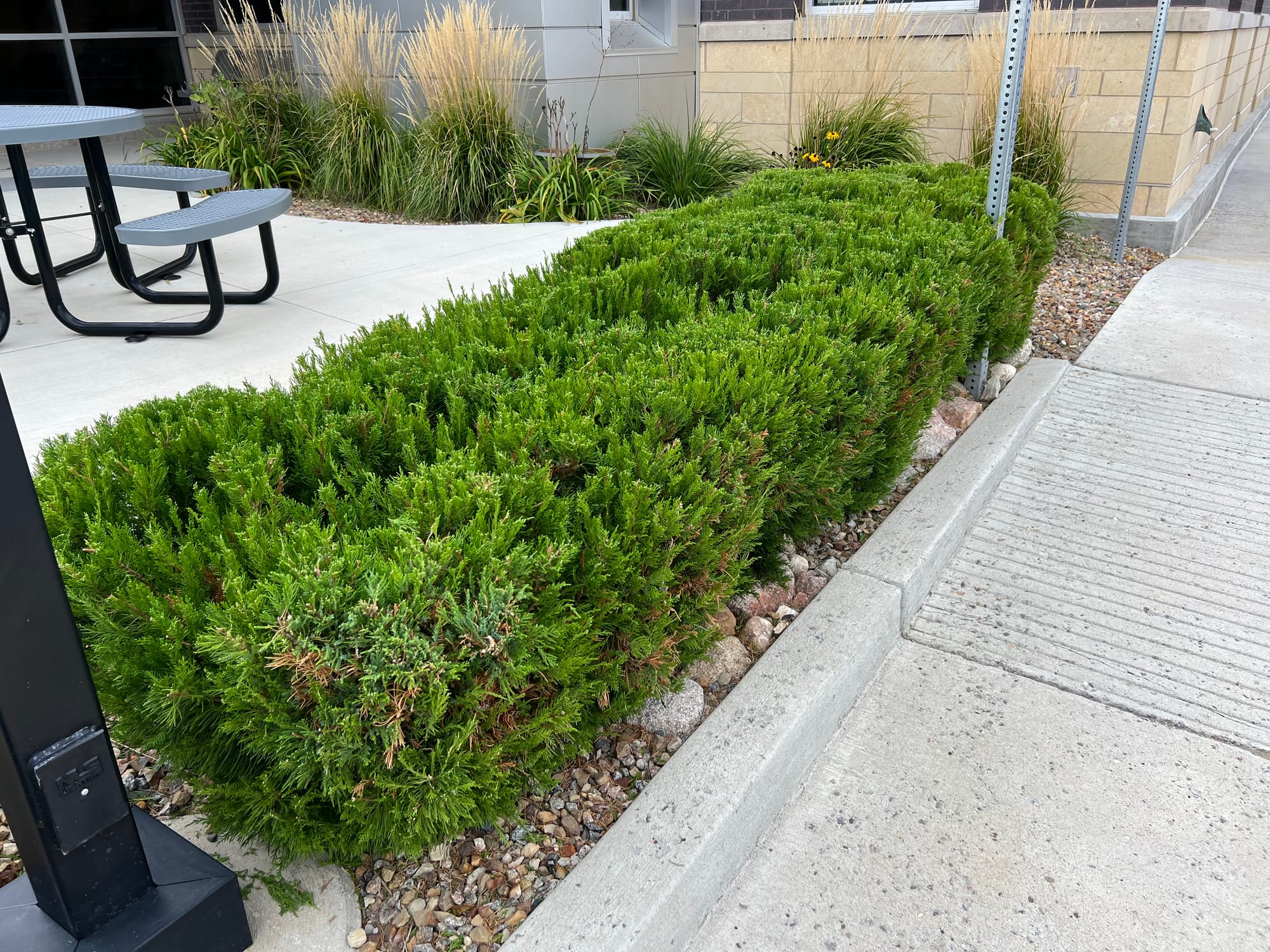
Savin Juniper
Wichita Blue Juniper, Juniperus scopulorum 'Wichita Blue'
When I first planted Wichita Blue, I did not really like it. I just wanted one because I didn't have one, and I wanted to see how it performed compared to Medora Juniper, (we'll look at Medora in a bit). But now I love it! It has a looser, informal feel if you leave it in its natural state and avoid shearing. It has the best silvery blue color of all the upright junipers I can grow in my area. Hardy to Zone 3, with a mature size of 15' H x 6' W. Judging by how quickly mine is growing, I think this is a conservative size range.

Wichita Blue Juniper
Icee Blue Juniper, Juniperus horizontalis 'Monber'
Icee Blue is another creeping juniper like Motherlode but has a silvery blue color during the growing season. It also has a plum winter color like Motherlode, at least in the colder winter climates.
Icee Blue will quickly create a dense ground cover, especially if it is allowed to self-layer on mulch or soil. I have it planted in mulch and rock gardens, and like Mother Lode, it is much more controlled where the stems do not touch soil or mulch. Wilton Carpet was the standard for a bluish creeping juniper many years ago, but Icee Blue is a better variety. It grows slightly shorter at 4" tall and is hardy to Zone 3.
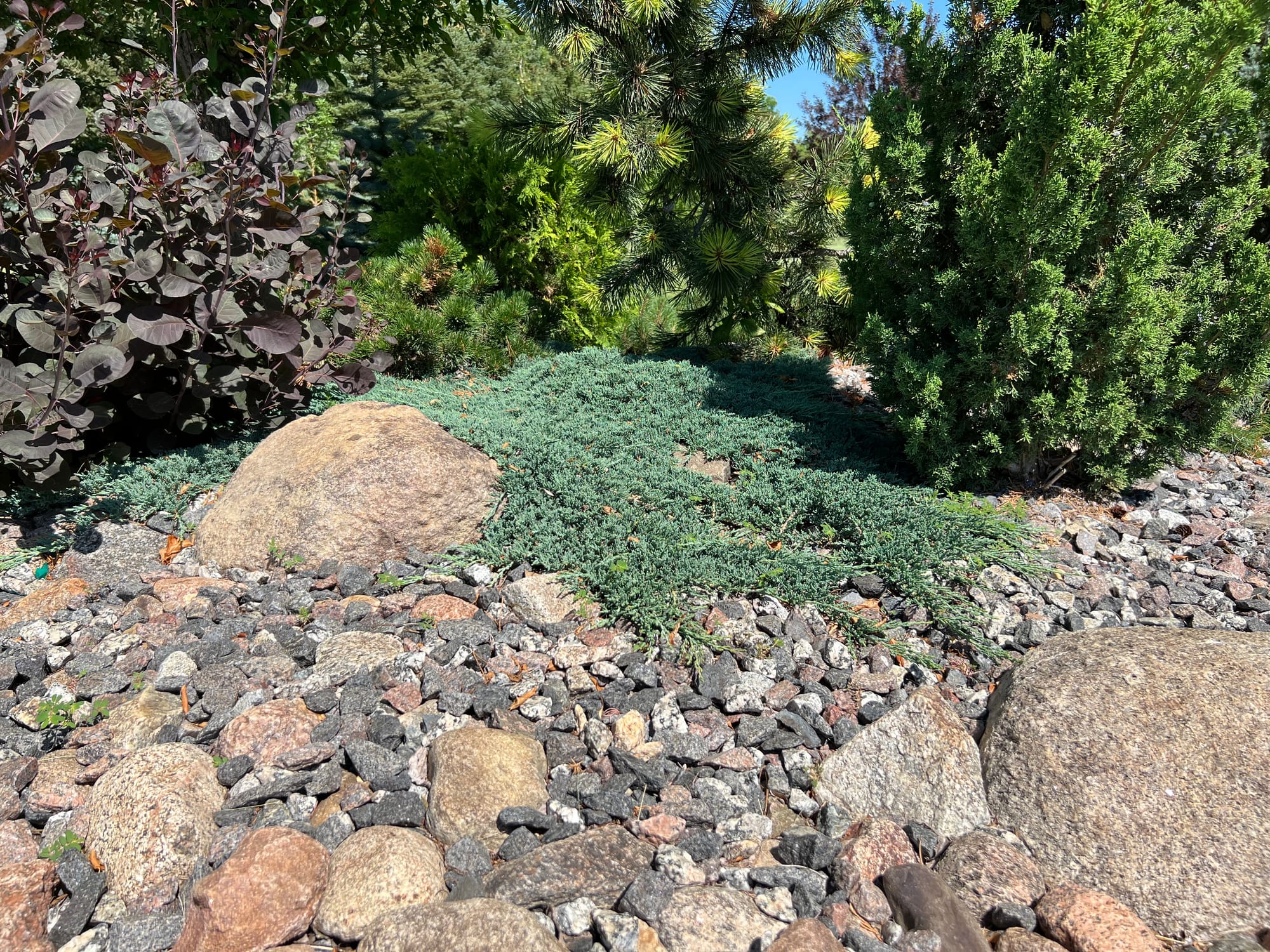
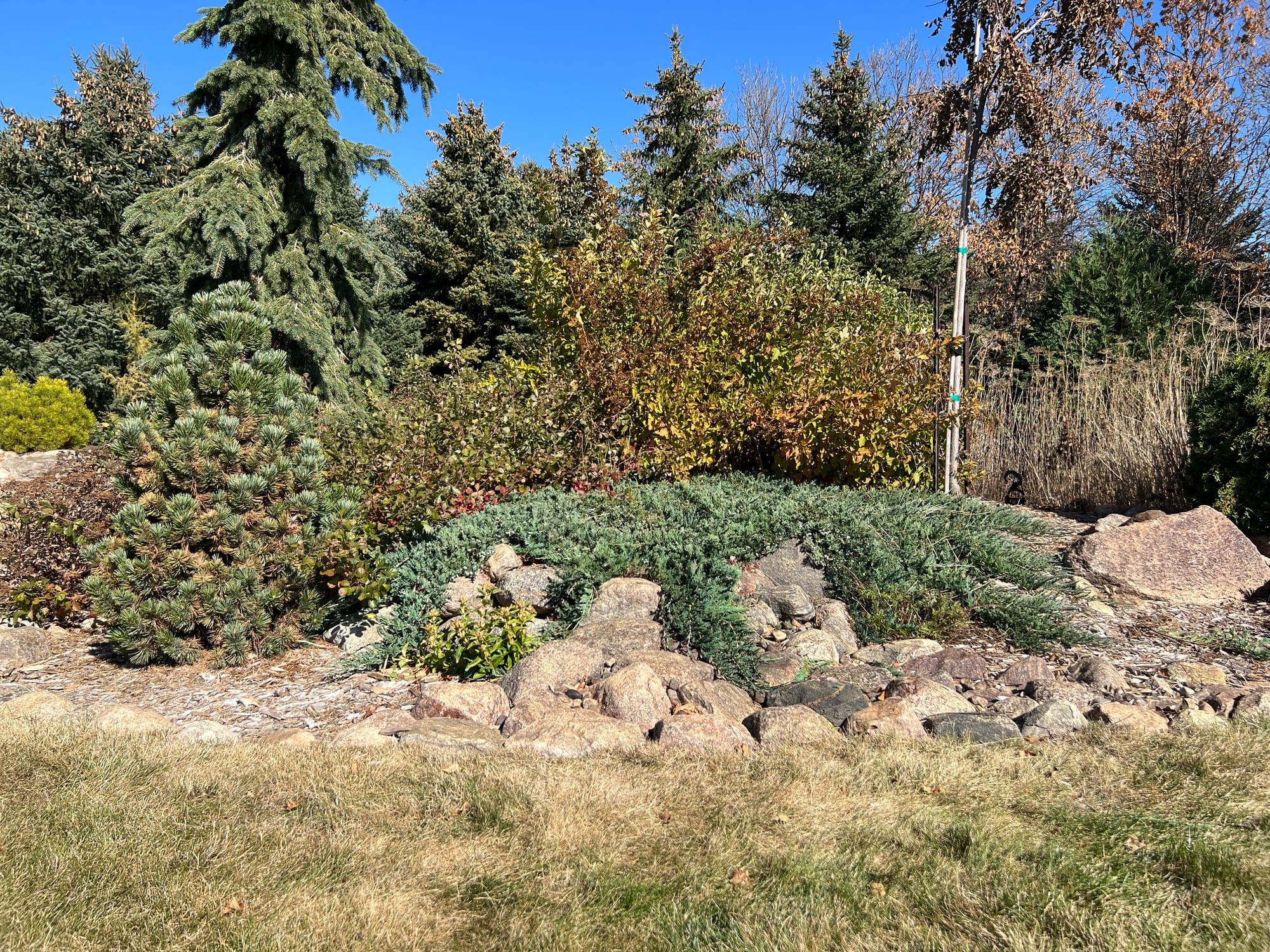

Icee Blue Juniper
Medora Juniper, Juniperus scopulorum 'Medora'
Medora Juniper is an older variety (1940's) selected from the Medora area of North Dakota in the U.S. It's still widely planted for good reason. It has excellent blue-green foliage and a narrow columnar growth habit. It will tolerate heat, drought, and the coldest of winters. If you give it the proper space, you will never need to shear it, but it does respond well to light shearing if a more compact, tight look is desired. Medora is a male clone, so it does not produce berries. Mature size is 15' H x 4' W, hardy to Zone 3. Here is another video where I highlight this great upright conifer evergreen.
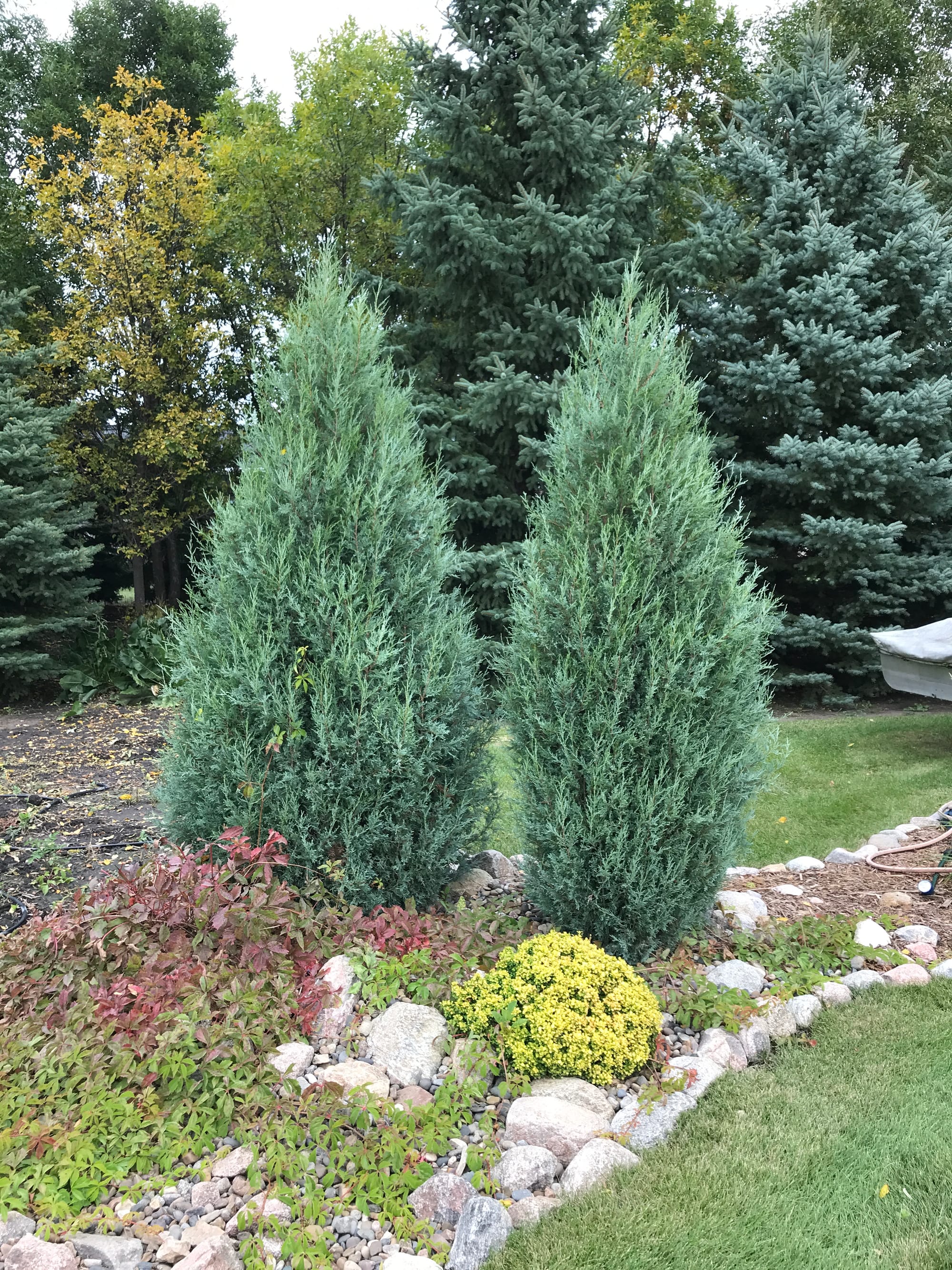
Medora Juniper
Trautman Juniper, Juniperus chinensis ‘Trautman’
This variety is new on my radar. I planted my first Trautman about 5 years ago, and I now have three in various locations. I'll be honest: I did not expect it to survive our winters (I'm Zone 4 on the maps, but I feel I'm closer to Zone 3 in reality). But it's doing very well and has one of the more unique upright habits so far. I think it has the look of a Saguaro cactus, with shoulder branching (maybe I'm just dreaming of warmer weather in Arizona). That may change as it ages, and it will likely develop a tighter growth habit. I'm planning on keeping one of the three sheared in a very tight shape for comparison. The Trautman is an excellent option if you are looking for that tall, narrow Italian Cypress effect. The Taylor Juniper variety is another superb option for the tall, narrow effect we'll look at shortly. Mature size is 15' H x 4' W, bluish-green needles, and hardy to Zone 4 (probably 3).
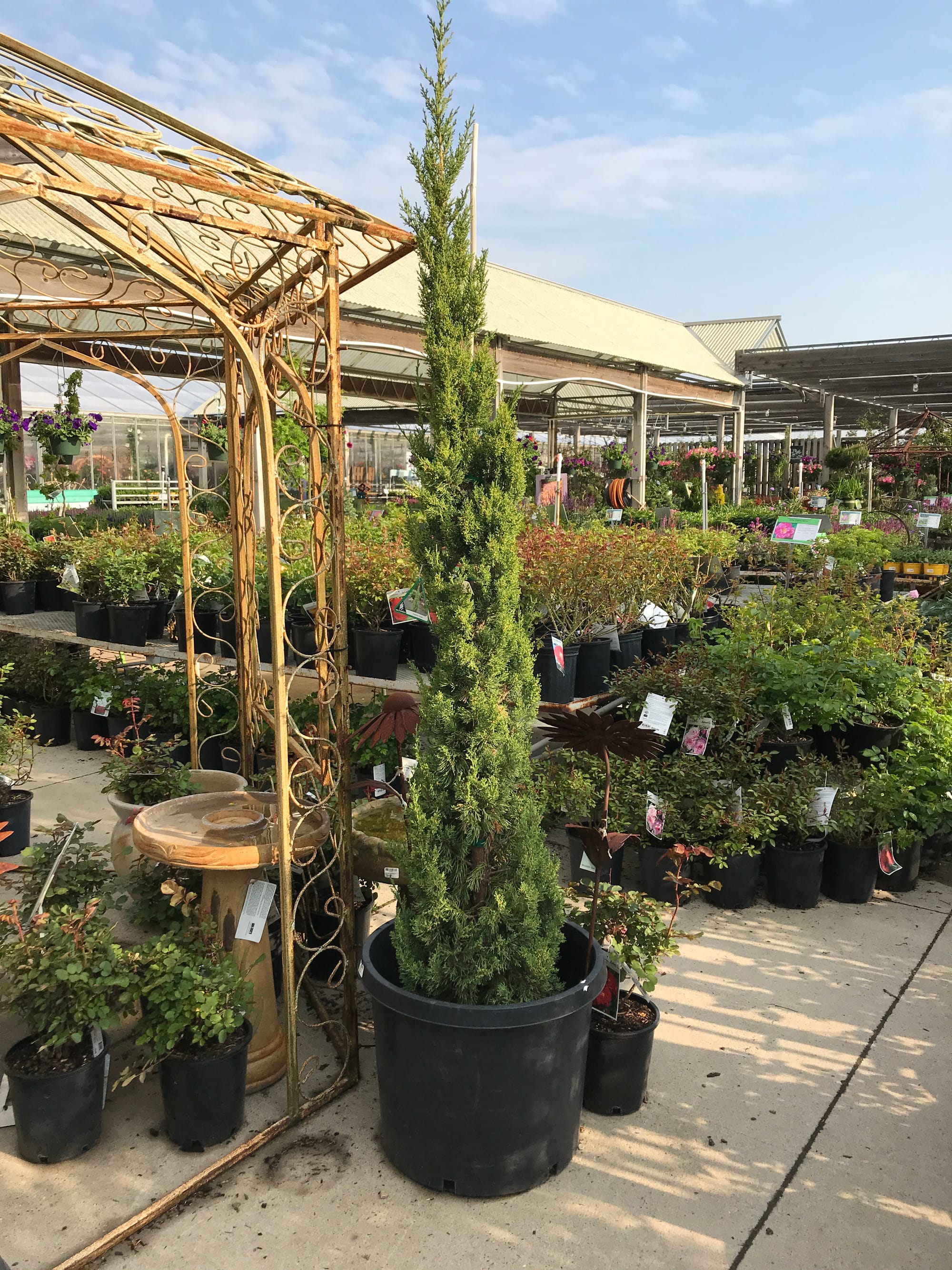
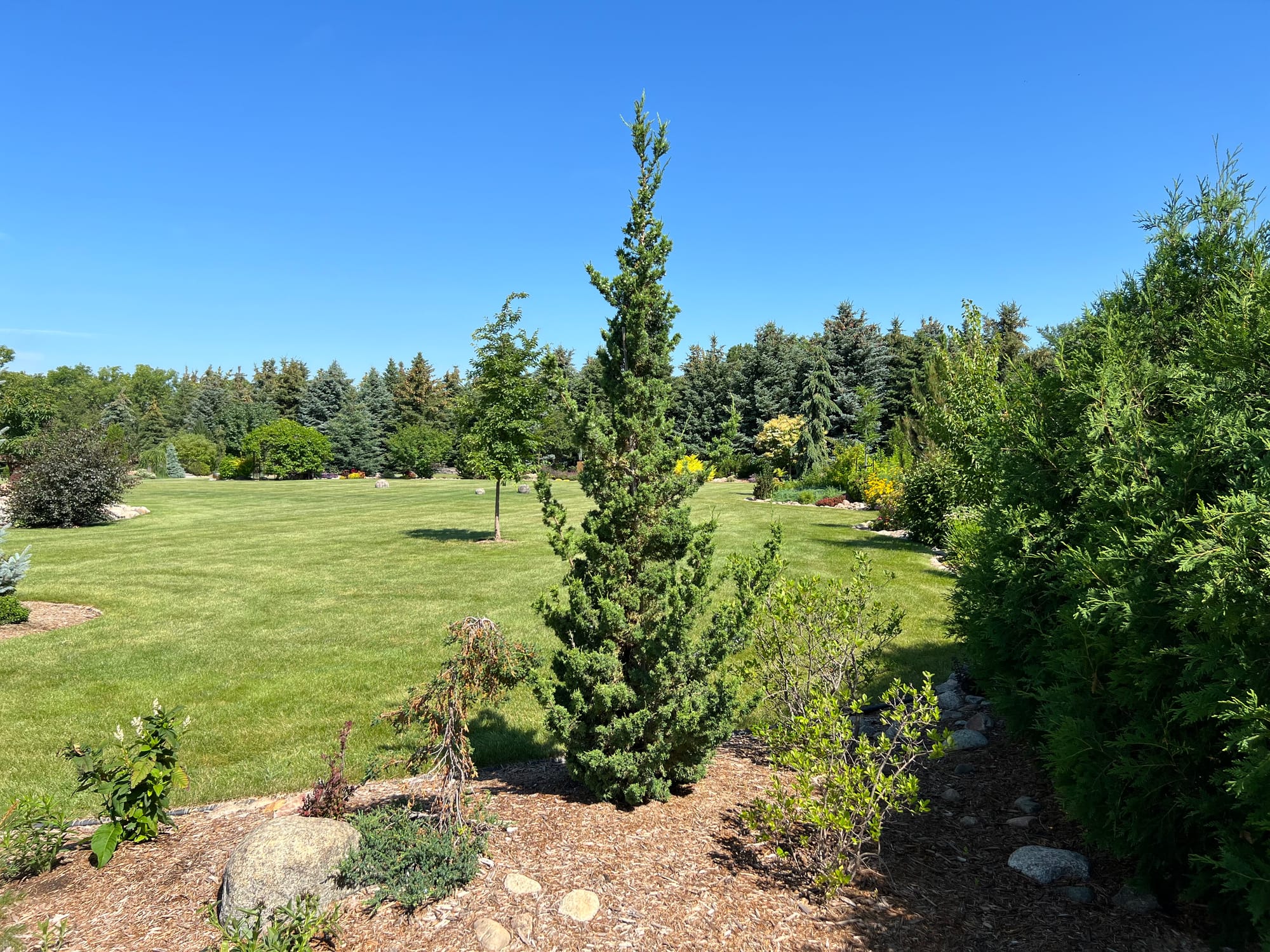
Green Columnar Juniper, Juniperus chinensis' Hetzii'
I've only grown this in a container, so I cannot speak to its hardiness or how it does in the wild or open areas. But it does fantastic in containers! You can check out this video where I tackle the pruning of this Columnar Green, keeping its spiral form. It has been trained this way and needs annual shearing to keep the shape. Since it is grown in a container and I live in a cold climate, protecting the roots artificially from frigid temperatures is also necessary. You can watch that overwintering process in a video I put together here.

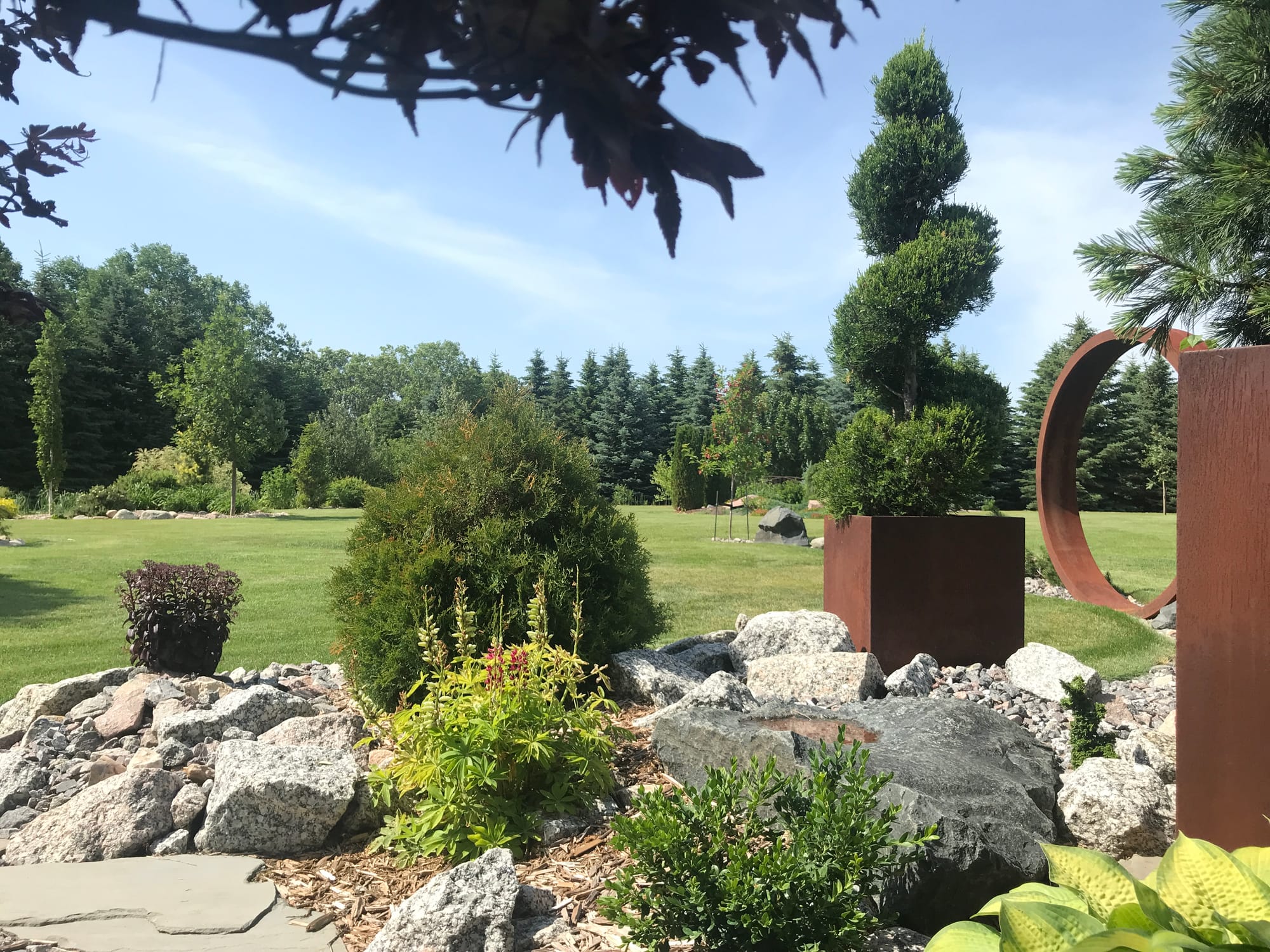
Green Columnar Juniper
Calgary Carpet Juniper, Juniperus sabina 'Mona'
This juniper always reminds me of Marcy. A wonderful gal who passed recently. Marcy was a plant lover and landscape designer who would (almost) always use them in her designs. I used to be in charge of purchasing at the garden center where I worked and always made sure I kept Calgary Carpets in stock for her. Rest In Peace Marcy!
This superior lower-growing juniper is about 12" tall and can spread at least 10 feet wide. I'm going to refer to the branching habit as horizontal layering. It's unique! Its beautiful, rich green summer color picks up a slightly bronzy winter color and is hardy to Zone 3.
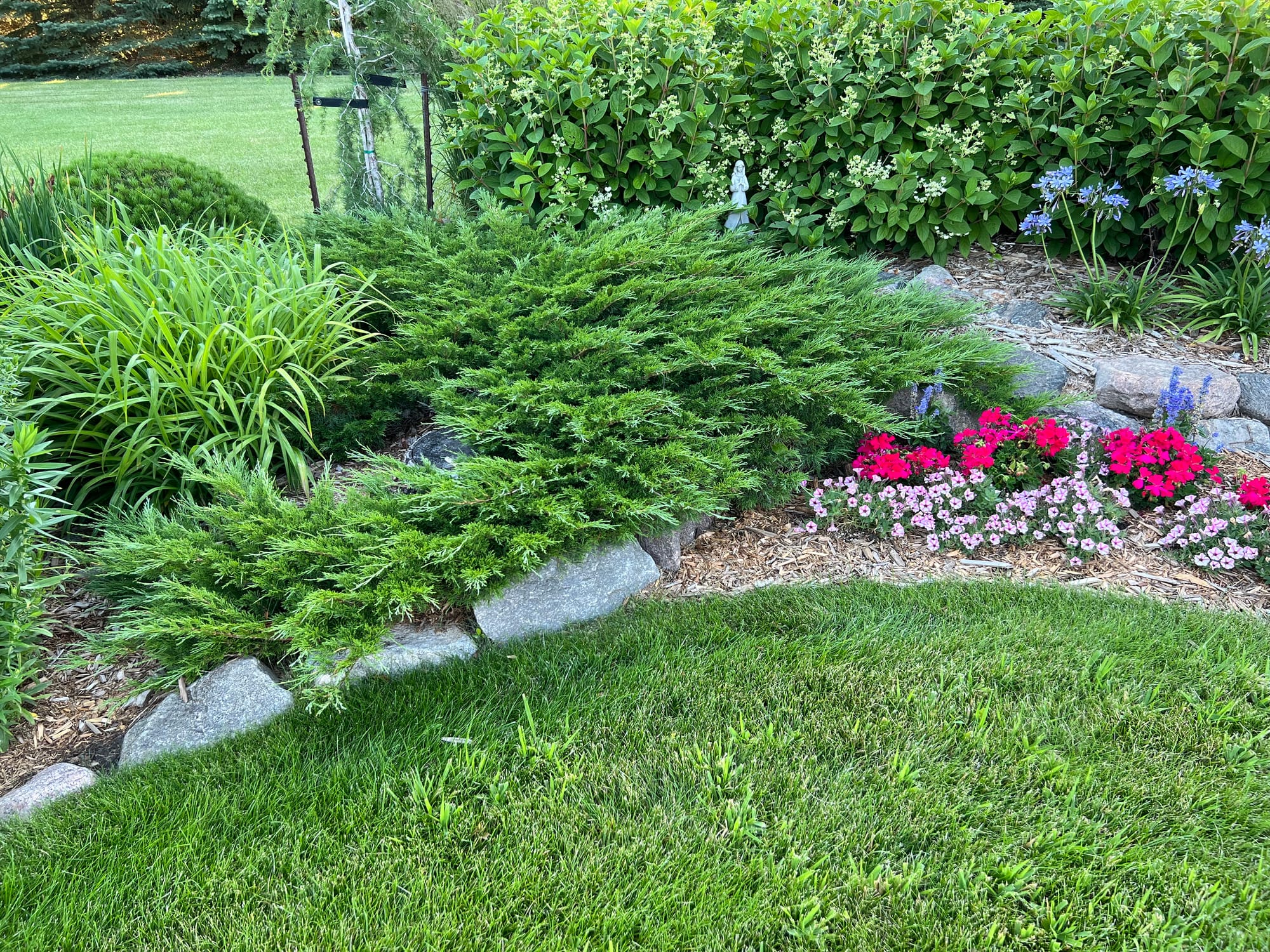
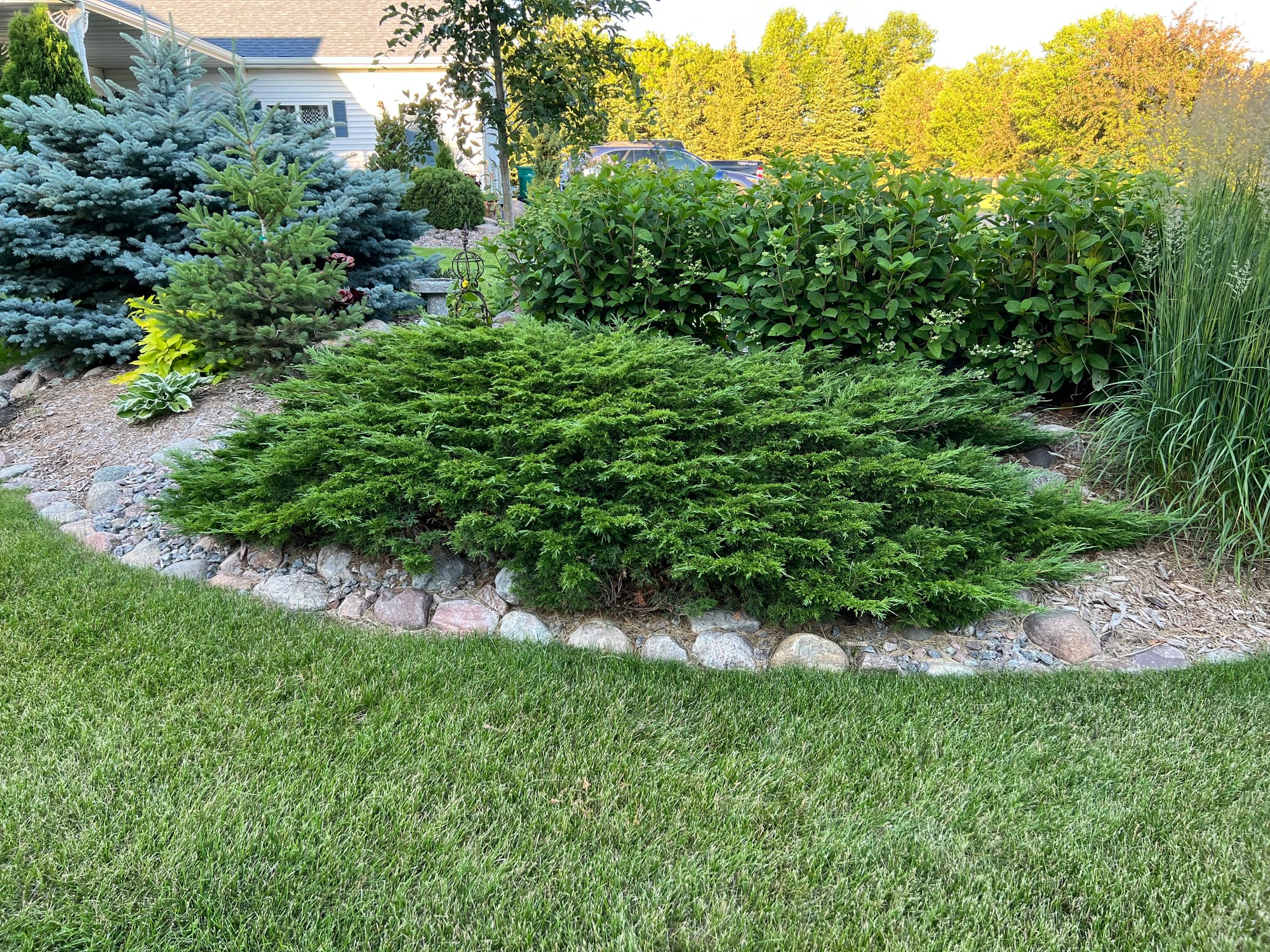
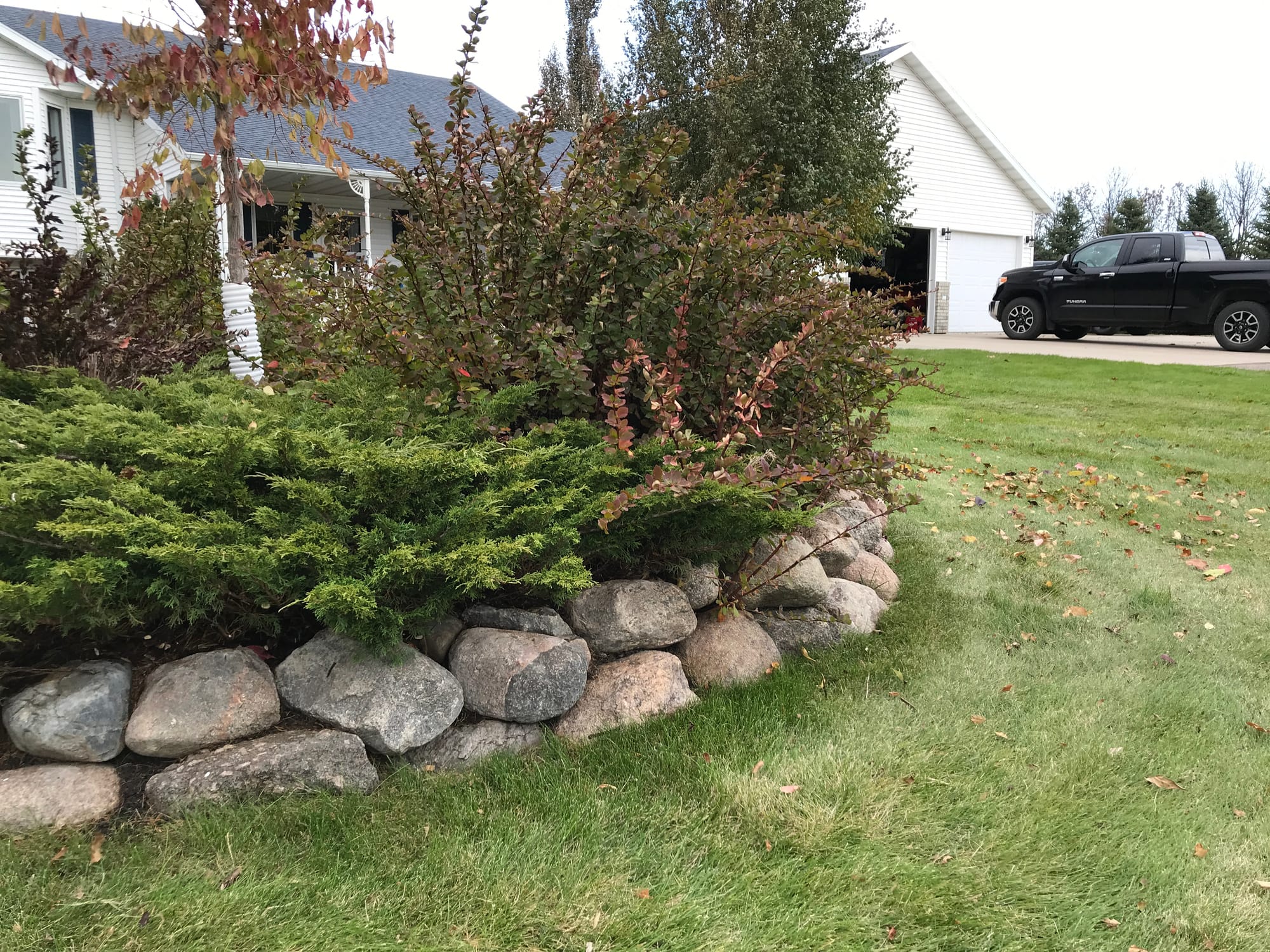
Calgary Carpet Juniper
Arcadia Juniper, Juniperus sabina 'Arcadia'
Arcadia is another lower-growing juniper that will get about 18-24" tall, so just a step above the Calgary Carpet. It has an upright-arching branch habit similar to the Savin discussed earlier but stays at least half the size in height. It has all the durable qualities of all the junipers we have discussed, including hardiness to Zone 3 and drought tolerance.

Arcadia Juniper
Taylor Juniper, Juniperus virginiana 'Taylor'
Medora used to be my favorite Juniper, but Taylor now takes the prize. It's the tall, slender look. Impressive. A show stopper. Taylor's are hardy to Zone 3 and will reach 30' H x 3' W. It also has a nice bronzy winter color.
In a separate YouTube video highlighting several unique evergreens, I referred to the Taylor as having that Italian look. One commenter poked fun at my pronunciation of "Eye" talion instead of "It" alion. I wasn't sure what the heck they were talking about at first, but eventually, I figured it out! They were glad I saw the humor in it.
And yes, I now pronounce Oregon, Ore "gun" rather than Ore "gone." With the rabbit hole I'm going down here, I fear I'm fading on my enthusiasm to talk about Junipers. One to go!
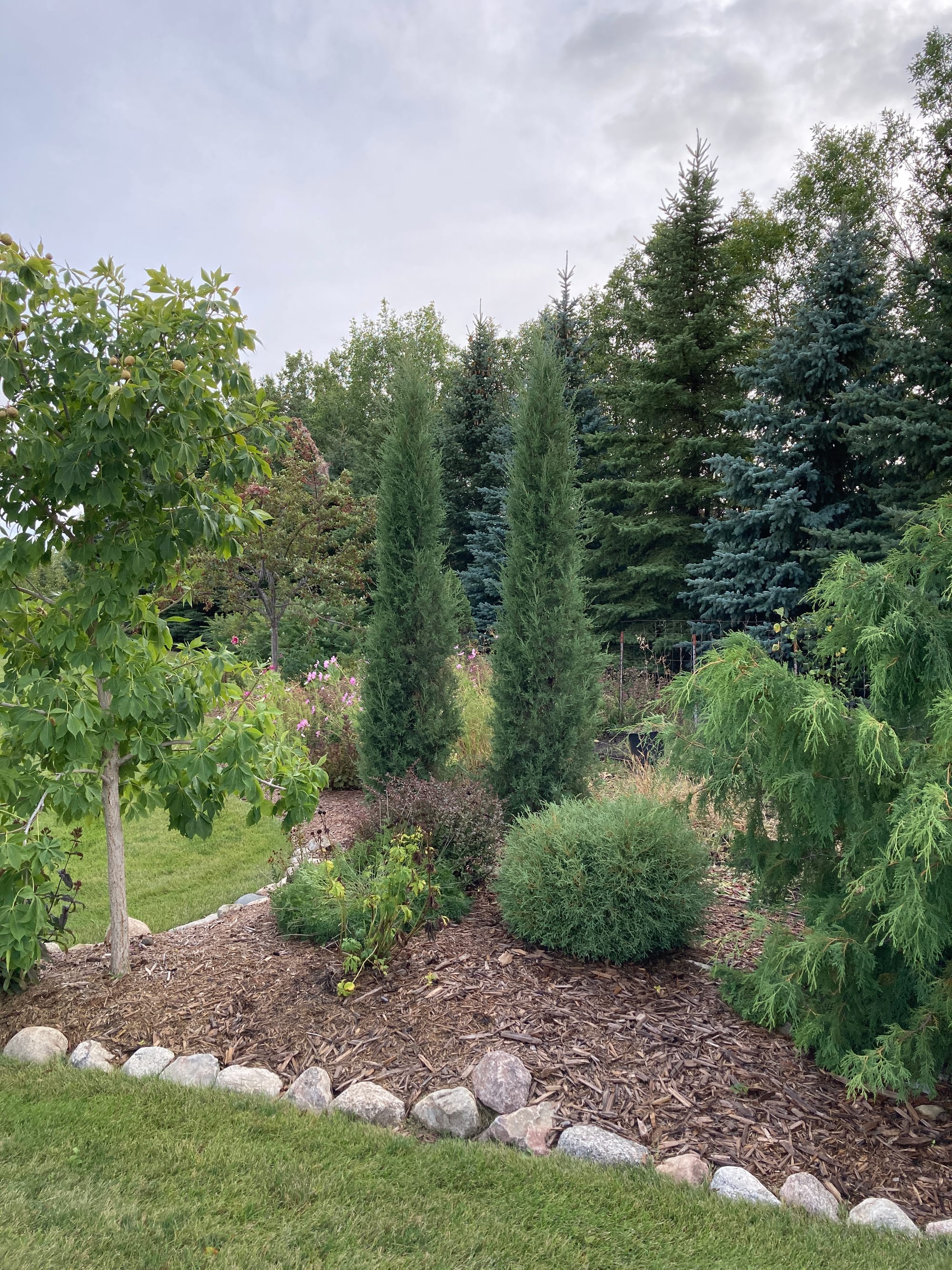
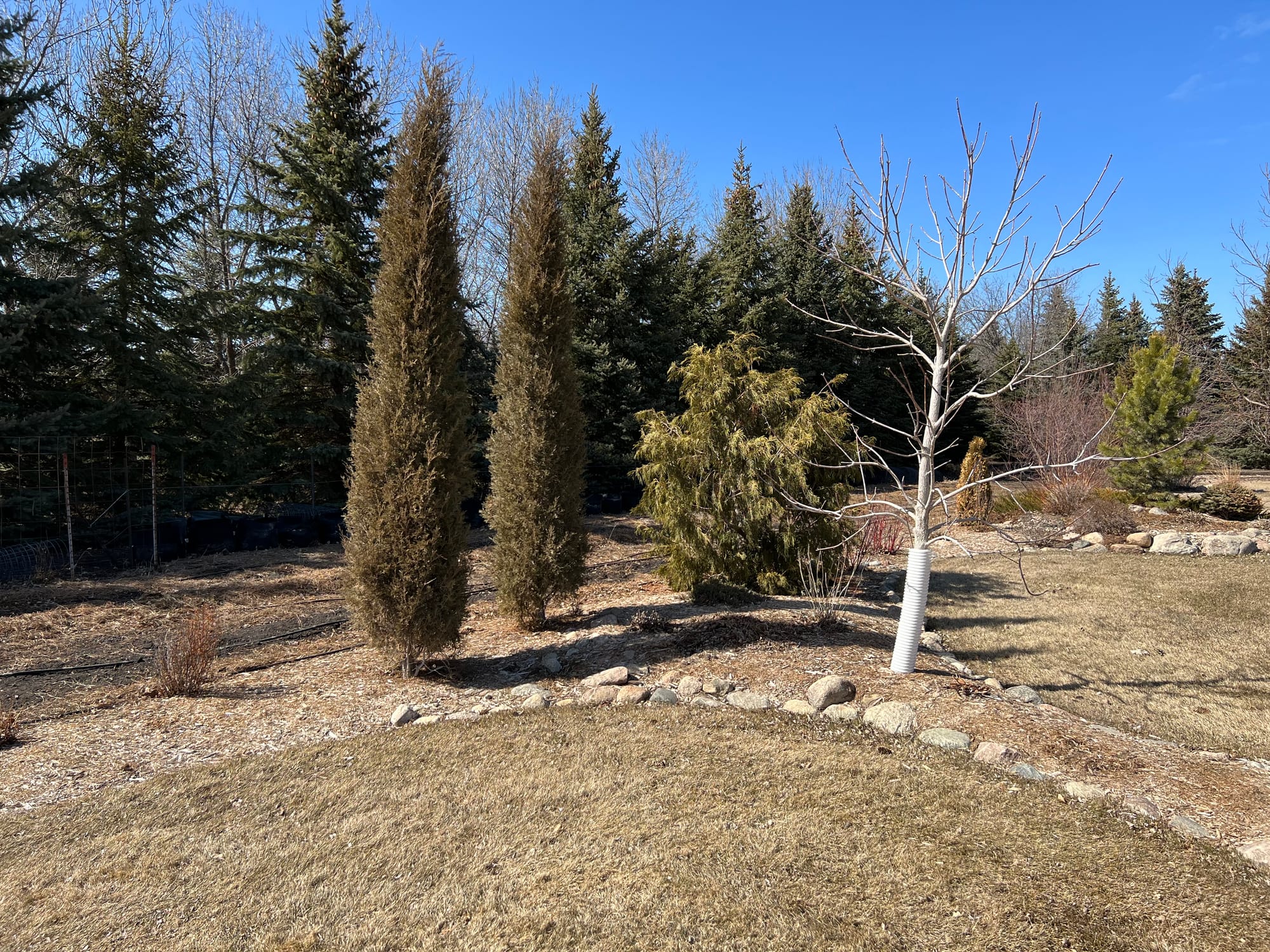
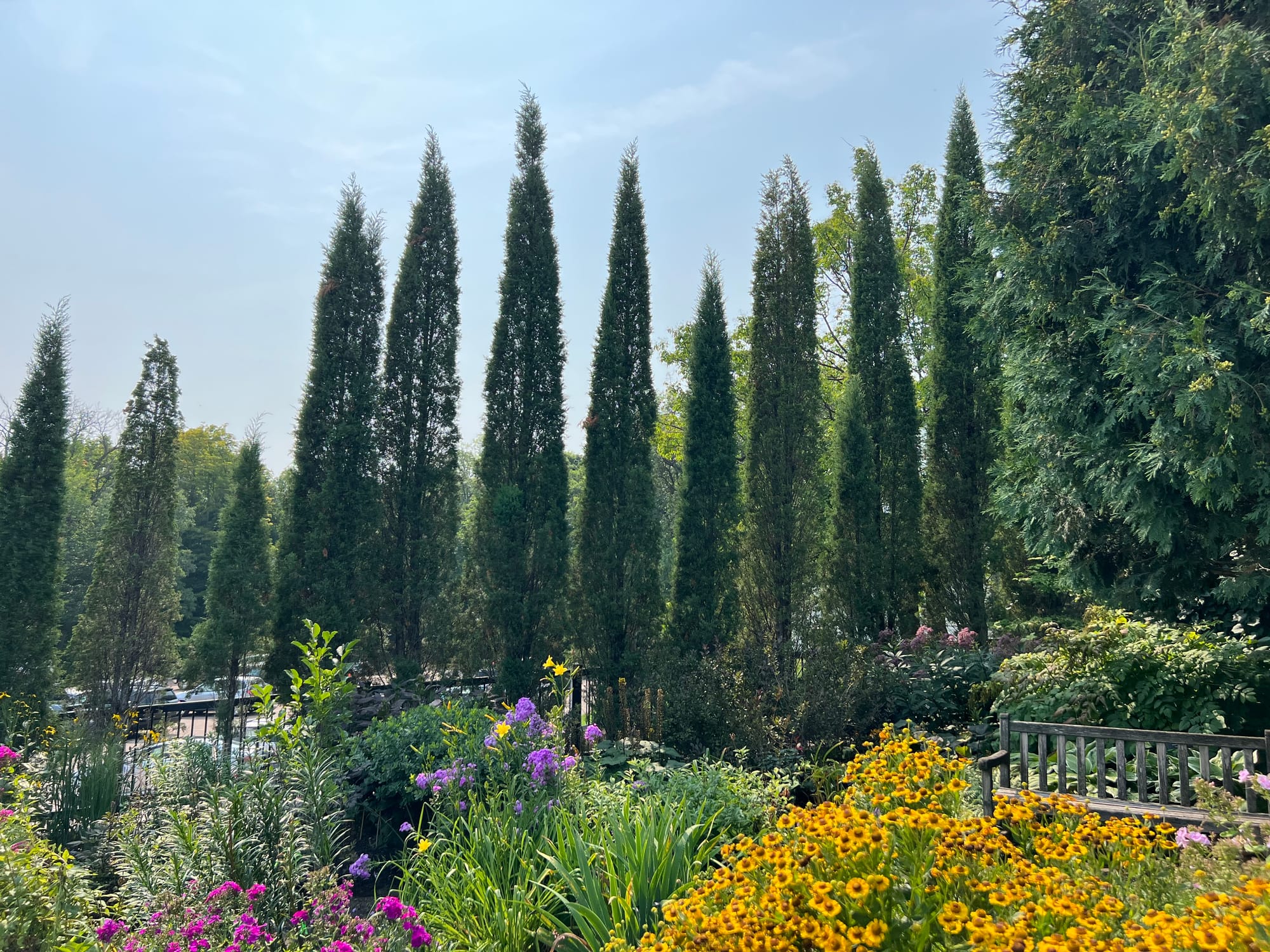
Taylor Juniper
Prince of Wales Juniper, Juniperus horizontalis' Prince of Wales'
We've covered yellow and silvery-blue creeping junipers, and now we've got a green creeping juniper. Prince of Wales is my favorite in this color range. You'll see it listed as bluish-green, but it is green. I've also seen it listed to get 12 inches high, but 4-6 inches tall is more accurate. It picks up a bronzy winter color, similar to the Calgary Carpet, and will spread out (aggressively) like the other creepers if you allow it to self-layer. Like the other creepers we covered, its effect is beautiful on slopes and walls and intermixed with rock gardens. Hardy to Zone 3.
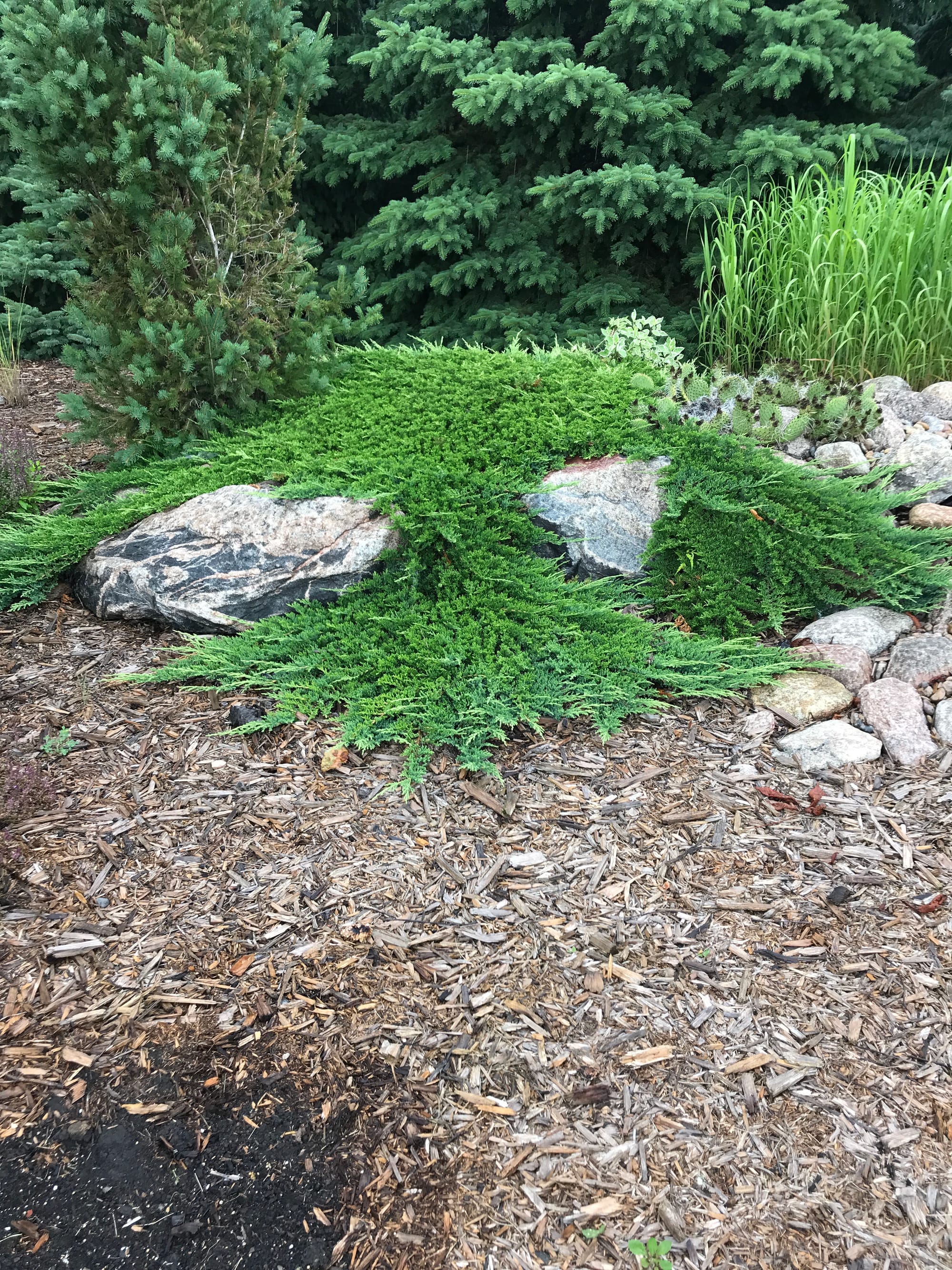
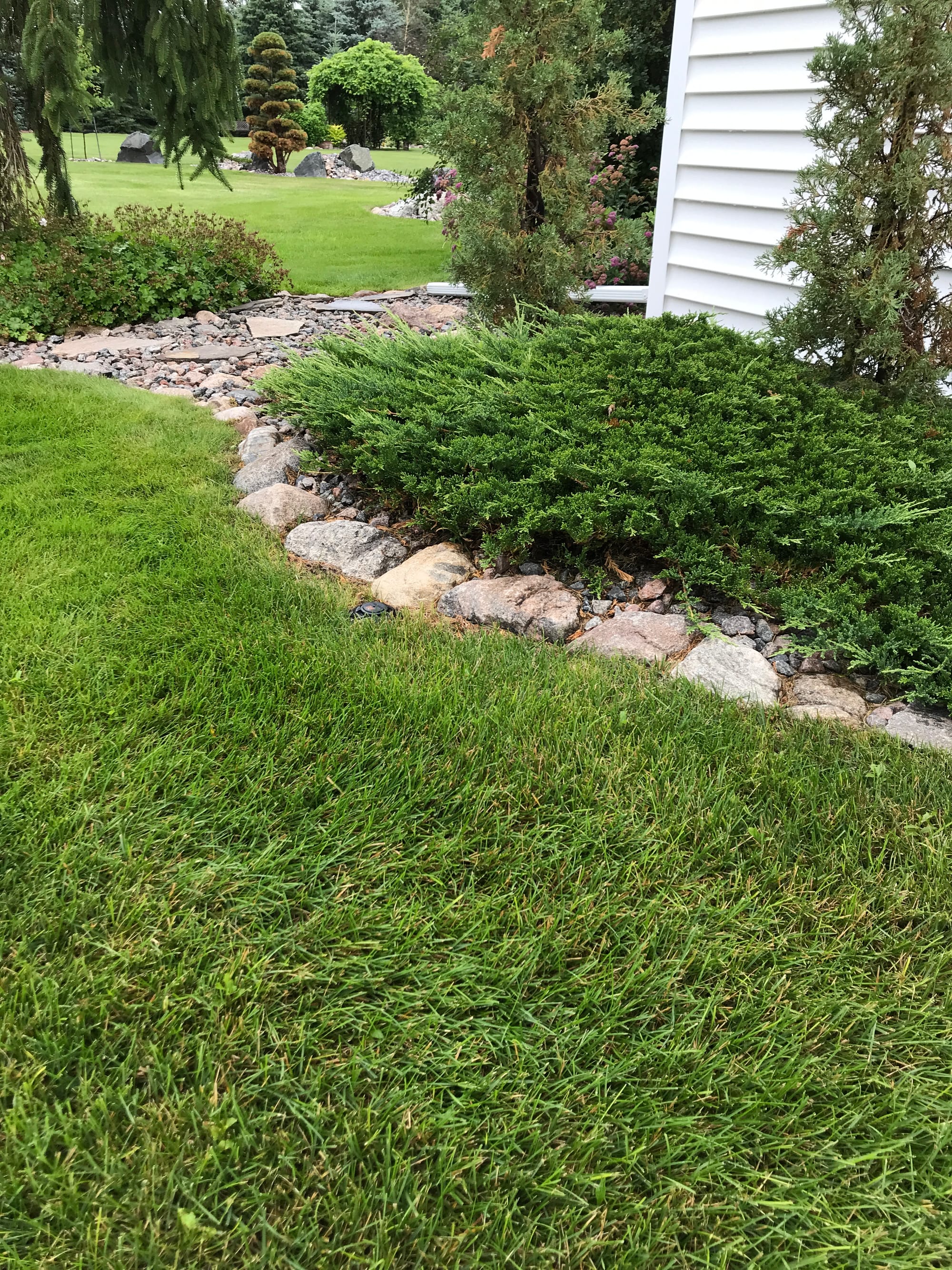
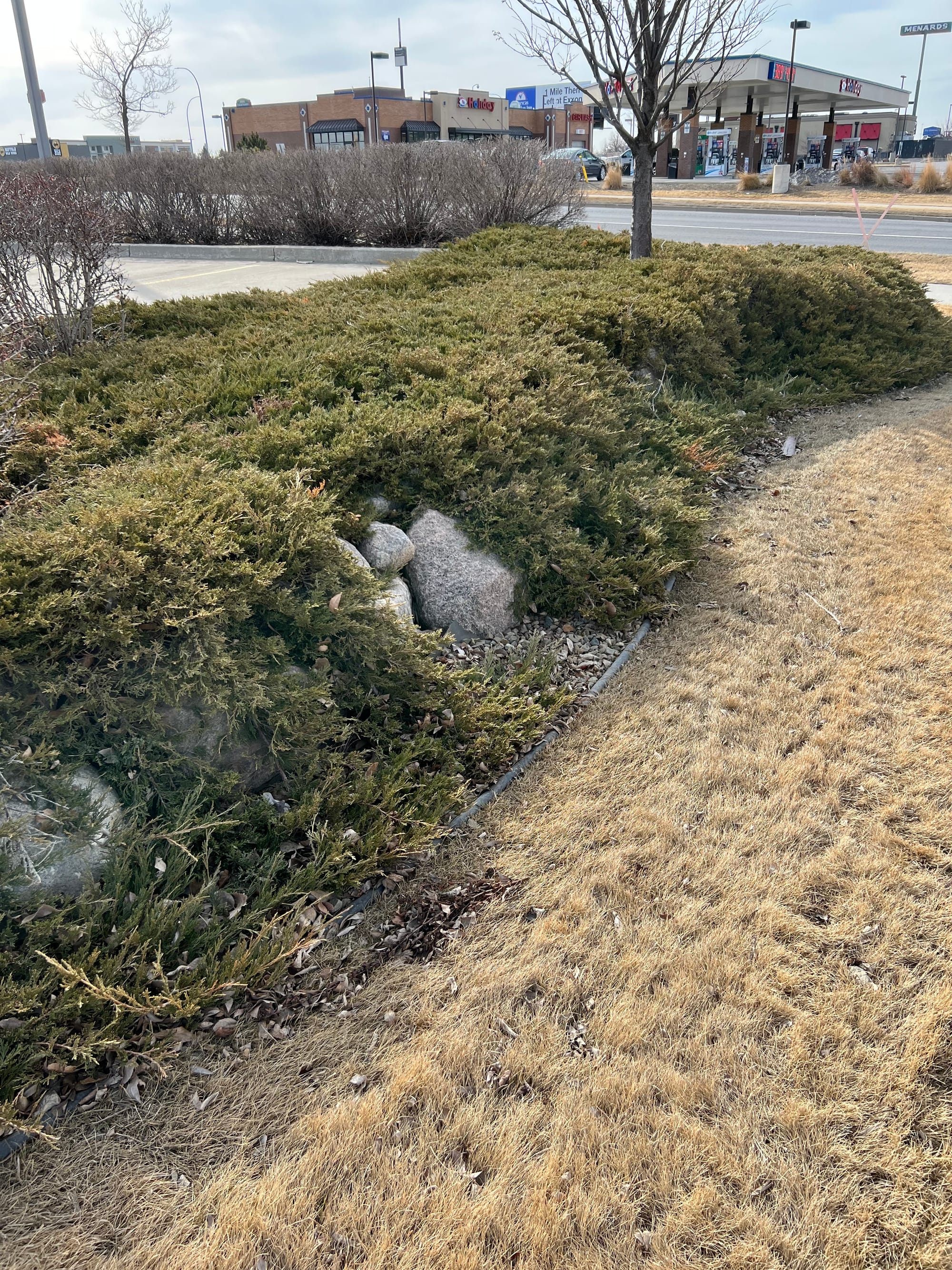
Prince of Wales Juniper
That's a rap! Thanks for stopping by Garden Hike. It's always fun to share.
Kevin
Garden Hike is supported by its audience. When you purchase through links on this site, we may earn a small commission at no additional charge to you. Thank you.
Click A.M.Leonard’s banner below to check out their great selection of tools and supplies.

